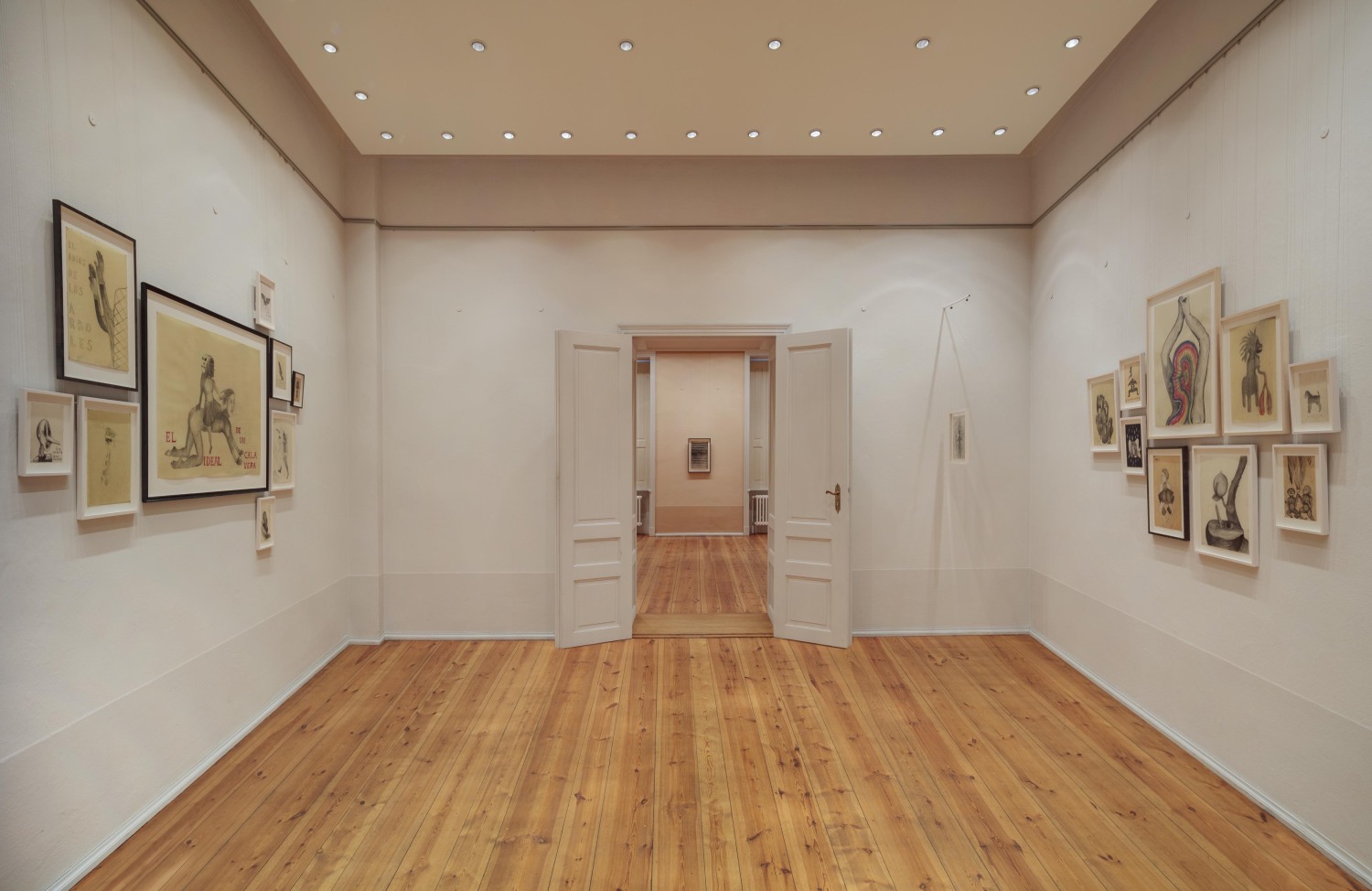Wechseln zur deutschen Version
March 11, 2023 – August 27, 2023
Gutshaus Steglitz
Schloßstraße 48, 12165 Berlin
Monday–Sunday 10am–6pm
Closed on 4.4. / 25.4. / 3.5. / 6.6. / 4.7. / 1.8.
admission free
Opening: March 10, 2023, 7–9pm
Introduction: Dr. Jenny Graser, Kupferstichkabinett, Staatliche Museen zu Berlin
Berlin-based artist Sandra Vásquez de la Horra (born in Viña del Mar, Chile, in 1967) primarily creates medium- and large-format drawings (pencil and graphite) as well as mixed-media works on paper (watercolor and gouache), which she then immerses them in wax, resulting in a semi-transparent effect and a relief-like impression.
Increasingly she has been moving into the third dimension with accordion-folded or house-like objects produced in the same media. The layer of wax heightens the often surrealistic effect deriving from her pictures’ expressive depiction of figures and other motifs as well as their complex content.














